The Cornell Lab Bird Academy › Discussion Groups › Nature Journaling and Field Sketching › Getting Comfortable with Watercolor
-
 Gah, wet-on-wet: too wet, colors too muted, etc.
Gah, wet-on-wet: too wet, colors too muted, etc. -
Hi Amy. I love the way you captured the wonderful blended colors of the head & exquisite shadow of the bill. The details of the eye is great too.
-
-
There was no space to post my experience with 3D painting of the next topic. So I post it here. I (carefully) put an egg on the table. I noticed it casted a double concentric shadow, so I tried to copy it. I had to move fast, because my paint was drying rapidly. This make the contours a little bit wobbly making the egg more look like a potato ;). Nevertheless, I am happy with this first attempt.

-
> I tried several variations on the techniques and I watched various Youtube videos. The video of Makoccino on how to paint a simple feather in watercolor inspired me to repeat this exercise with the other techniques as well. It gave a first impression about their possibilities and limitations of the various techniques. Wet on wet creates the most wonderful color effects. Challenges were controlling the amount of water, applying the paint at the right speed and matching the contours exactly. Dry on dry is much easier to control . It looks more like a pencil drawing. Wet on dry turned out to be darker than anticipated, but it is a nice technique to use as an overlay on wet on wet, as shown on the left feather.

-
Hello Koen. Gorgeous looking feathers and the specific details of each technique are definitely easier to see in your drawings. Thanks for sharing this.
-
-
I have tried doing wet on dry mostly. I like that technique because it is easy to do fine lines and it gives a clear color unlike some of the other techniques. Wet on wet has been a bit difficult for me though because it is a bit messy. Dry on dry is okay, but it doesn't give a clear color for me, so I prefer wet on dry overall. I think for my journaling projects, I think that I would use wet on wet for big spaces, dry on dry for items that have lots of texture, but I would typically use wet on dry.
-

-
I never could have done this before this course. Here is a red squirrel eating a bird seed. This is an example of glazing.

-
Gorgeous looking details. Very realistic. I like how your drawing gives a sense of soft fur. Thanks for sharing this drawing.
-
-
My exercises took me time. I'm not full adjusted to the dry-on-dry with the waterbrush. I must keep doing it. At some point I used the old style brushes to finish the painting. Maybe doing it in a small scale doesn't help too.
These techniques for sure will be used while I'm doing nature journaling. For more satisfing results I need practice and practice more and more to give me better results.



-
These are just glorious, David! You have such subtle and yet strong contrast , great shadows and colors, and beautiful drawings 👏🏽👏🏽
-
David,
you mentioned you not fully adjusted with the dry on dry with the water brush; I think the wren is wonderful painting, beautiful is the correct word. The other two are great also.
-
-
 Here are two pages from my sketchbook showing use of wash, glazing, blending, wet-on-wet, wet-on-dry, and dry-on-dry. I looked back at some of my watercolors painted before I started this course, and wow! What a difference. Also, my sketchbook paper wasn't great for watercolor, so I found some old watercolor paper, cut it to size, and am painting on it and taping it into my sketchbook...
Here are two pages from my sketchbook showing use of wash, glazing, blending, wet-on-wet, wet-on-dry, and dry-on-dry. I looked back at some of my watercolors painted before I started this course, and wow! What a difference. Also, my sketchbook paper wasn't great for watercolor, so I found some old watercolor paper, cut it to size, and am painting on it and taping it into my sketchbook... -
I like how you have used them Patricia, it reminds me to put together all the techniques I have been learning in this course
-
-
 I've tried all three of these techniques. It's difficult to do dry brush with a water brush...I'll just have to keep trying. I hadn't thought about using wet on wet in my journal...great idea!
I've tried all three of these techniques. It's difficult to do dry brush with a water brush...I'll just have to keep trying. I hadn't thought about using wet on wet in my journal...great idea! -
Hello all, I am a teacher learning how to distance teach for a rollout next Monday. I have been taking breaks from he stress with a deep dive into Journaling. I am really enjoying the watercolors and appreciate the instruction in this course.


-
Very nice journal pages, painting, lettering, info.
-
-
 Patience and practice! I also think that my paper is a bit light weight, so maybe I shouldn't try too many layers. Lots of fun things to keep trying.
Patience and practice! I also think that my paper is a bit light weight, so maybe I shouldn't try too many layers. Lots of fun things to keep trying. -
I had the same problem, Heidi. I found some old watercolor paper in my studio, cut it to size, and taped it into my sketchbook. I like the weight of my sketchbook paper for drawing, but watercolor really needs thicker, textured paper to make the medium as effective as possible.
-
-
 Mixed Medium. Almost all Watercolors, some pen, pencil foundation, and metallics. R-Y-B-G-BL
Mixed Medium. Almost all Watercolors, some pen, pencil foundation, and metallics. R-Y-B-G-BL -
I tried all the techniques. Are for certainthings your going to do.

-

-
Hi Geminis. Great looking details on the hummingbird & flowers. Thanks for sharing this.
-
-
Previously I have only used wet on dry. Dry on dry was tricky and I would like to incorporate that and wet on wet in my own journal. I'd like to see more of both in application.

-
I tried all three. I think the wet-on-wet would work better on a stretched paper. The journal buckled too much and the colors pooled in the indented warp. However, I think wet-on-wet showcases the uniqueness of watercolor paints so I'd very much like to find a way to incorporate it into my journaling.
-
I love the iridescent quality of wet on wet paint technique. This was my first attempt. I think I will use it more often.

-


-
1. Will be trying these in the field hopefully. I find it hard to control the amount of water.
2. I am just beginning journaling, so I don't have any great thoughts other than to add colors to my drawings to help round out my journaling. -

I am relatively new to watercolor, and had only done a little wet-on-dry before. For this drawing, I used all three techniques: wet-on-wet for sky and open water, wet-on-dry for snow drift contours and cave water, and dry-on-dry for snow texture. I really like the dry-on-dry results. It took a bit of practice, and I also found that different water brushes yielded different results. The Sakura brush was easiest to use, for me. I'm certain I'll be using all three techniques from here on out. This was a great lesson!-
Great work! The sky is so dramatic. I also am impressed by how you showed the texture on the ice. I struggle with planning ahead to leave white where I need it This is so nice.
-
Very dramatic and an unusual subject. Nice use of watercolor,.!
-
-
When I was younger I was taught wet-on-wet but not the others. It was frustrating. This time I enjoyed it because I was curious what the paint would do. I like paintings that explore color, and wet on wet is a fun way to do it. I grew up in a watery area, and wet-on-wet is perfect for the play of light and color on water, or in the sky, or for fuzzy things in the distance.
Wet on dry comes easiest. I like the possibility of detail. I’m still working on getting the right balance of pigment to water so I’m not getting that splodge at the end of the stroke.
I had to really work at it to get the brush dry enough for dry on dry, but I like it for rough textures or stuttered white. It would be interesting to put a dry color over a lighter color so the light one shows through.
I was thinking of sharing a wet on wet landscape sketch, but picked up the paper before it was dry and smudged it. Learn from my my mistake, y’all. -
I used the wet on dry technique with the purple pansy and the wet on wet with the mallard. I would also like to learn how to paint the detail and catch the light colors in the flower or leaves. This was challenging with matching colors and adding details. I need practice with the dry brush technique. This is a first for me.

-
I tried some pansies with the wet on dry technique. (Didn't know that was what I was doing when I painted this>) I was mainly trying to match the colors. This is the first thing I have ever painted. I'm not sure how to work in all of the details using water colors.
I would like to use water colors in my journal, especially when coloring the birds I see. Also leaves and plants.

-
I tried to incorporate each of the techniques, wet on wet, wet on dry, and dry brush. I had an hour outside, and finished with an hour or so inside. I was wishing I'd taken a photo to remind me of the color and light details. The dry brush technique will take some
 practice!
practice! -
Hi Sandy, this is absolutely amazing! Are you able to share any tips on how you did it?
-
-
I like the control of wet on dry technique. I can see use for other methods though. Dry brush for details and textures, wet on wet for wash areas.
it’ll be fun to try out in the field, but it’s pouring rain lately and it’d be all wet on wet if I went out now! Journaling in the Pacific Northwest isn’t easy.
Read More:
 Gah, wet-on-wet: too wet, colors too muted, etc.
Gah, wet-on-wet: too wet, colors too muted, etc. 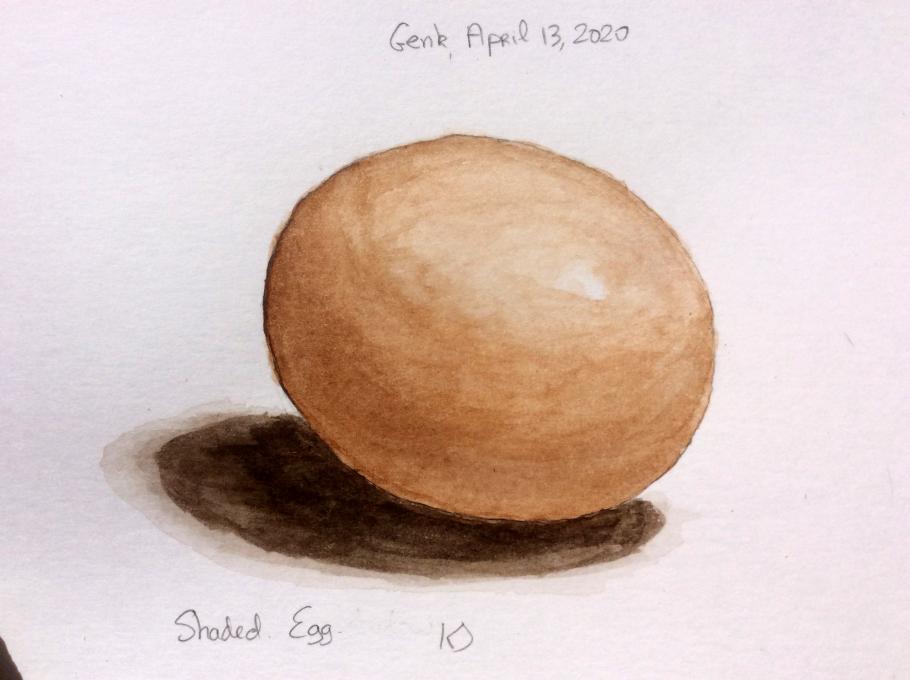
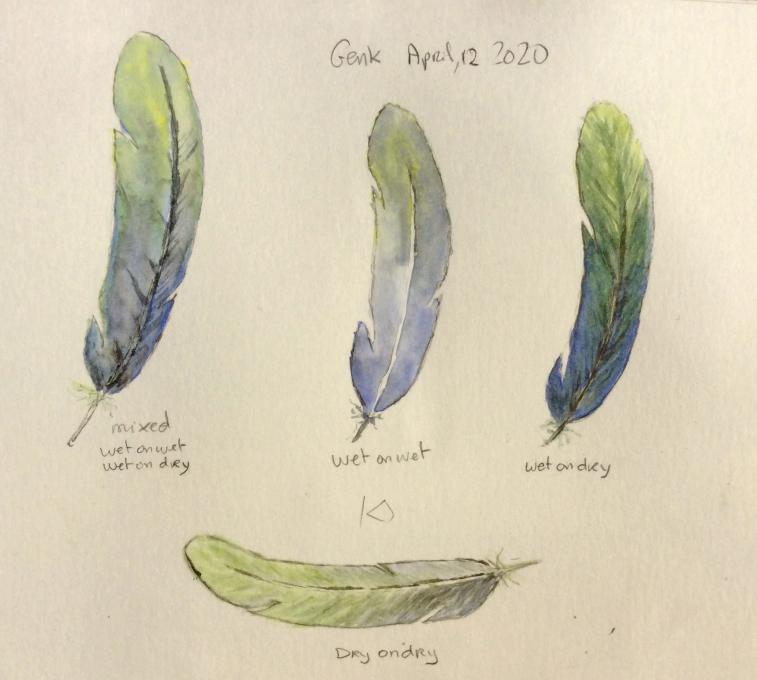
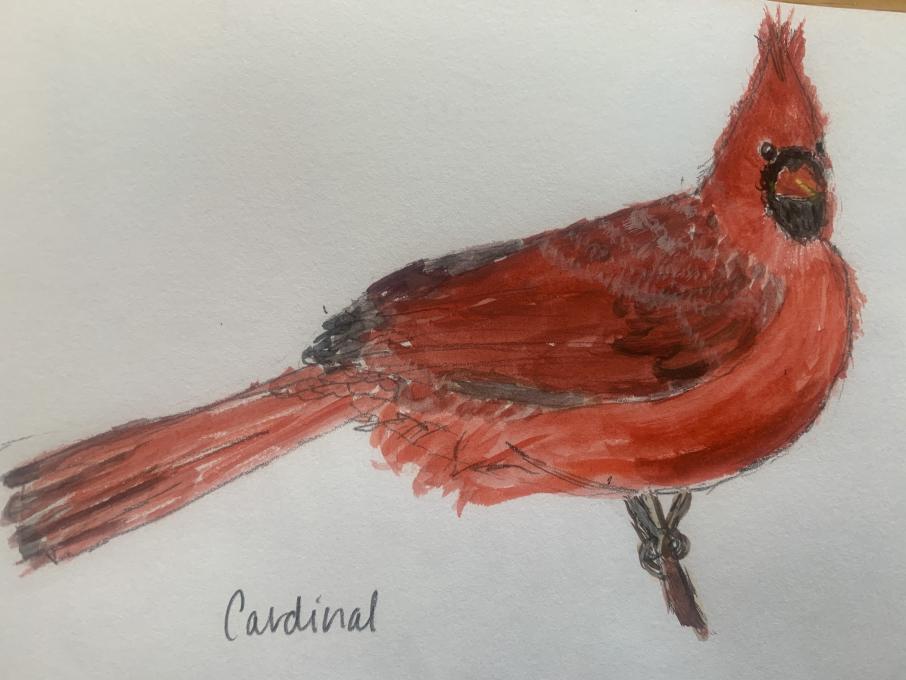

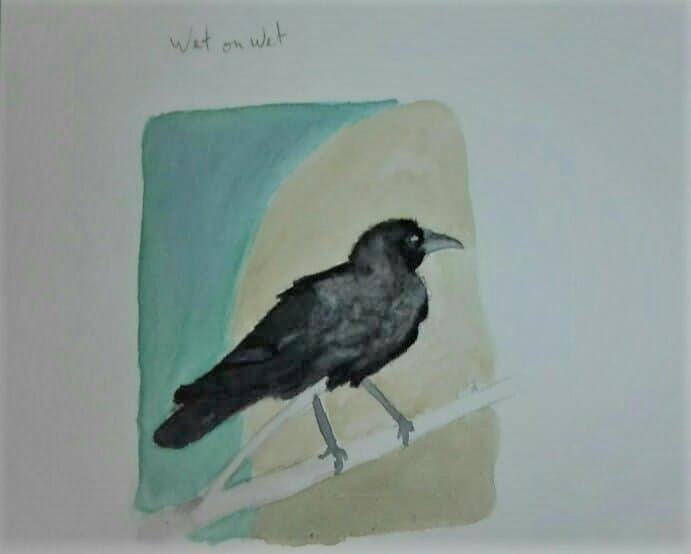

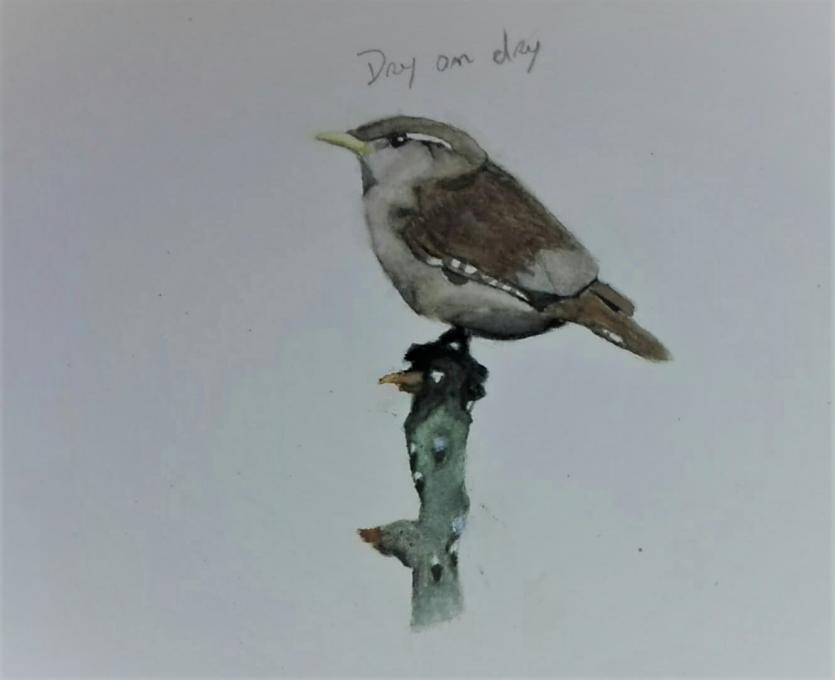
 Here are two pages from my sketchbook showing use of wash, glazing, blending, wet-on-wet, wet-on-dry, and dry-on-dry. I looked back at some of my watercolors painted before I started this course, and wow! What a difference. Also, my sketchbook paper wasn't great for watercolor, so I found some old watercolor paper, cut it to size, and am painting on it and taping it into my sketchbook...
Here are two pages from my sketchbook showing use of wash, glazing, blending, wet-on-wet, wet-on-dry, and dry-on-dry. I looked back at some of my watercolors painted before I started this course, and wow! What a difference. Also, my sketchbook paper wasn't great for watercolor, so I found some old watercolor paper, cut it to size, and am painting on it and taping it into my sketchbook... 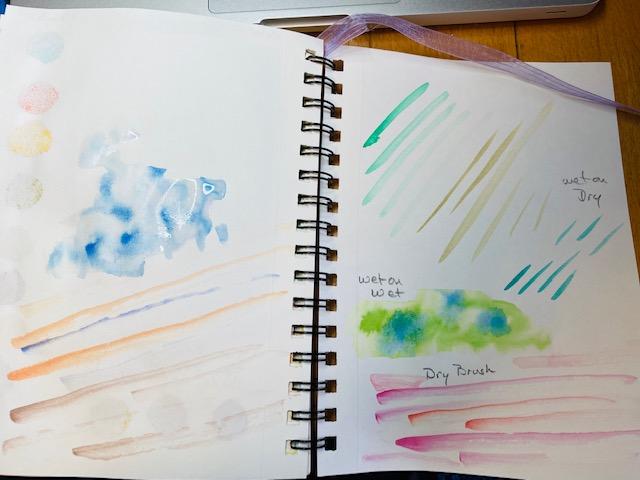 I've tried all three of these techniques. It's difficult to do dry brush with a water brush...I'll just have to keep trying. I hadn't thought about using wet on wet in my journal...great idea!
I've tried all three of these techniques. It's difficult to do dry brush with a water brush...I'll just have to keep trying. I hadn't thought about using wet on wet in my journal...great idea! 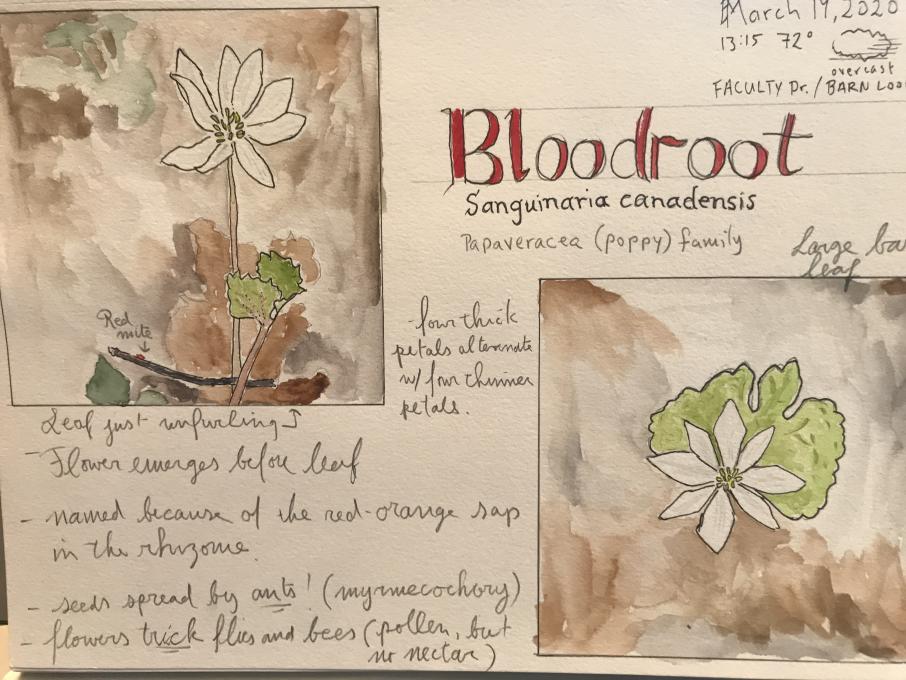

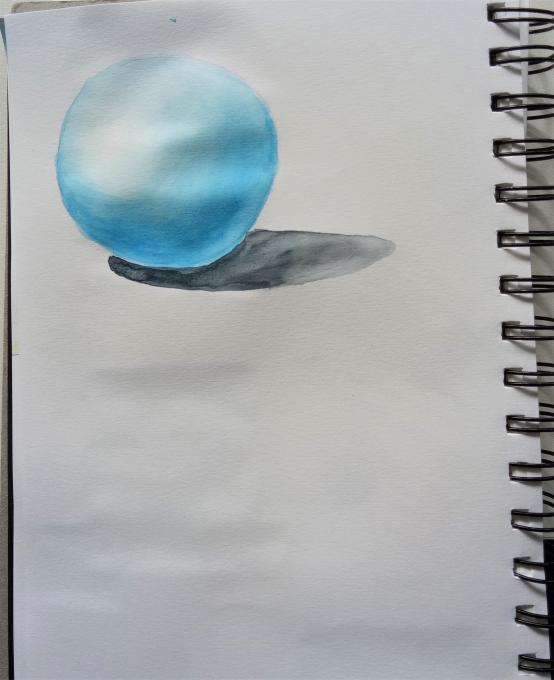 Patience and practice! I also think that my paper is a bit light weight, so maybe I shouldn't try too many layers. Lots of fun things to keep trying.
Patience and practice! I also think that my paper is a bit light weight, so maybe I shouldn't try too many layers. Lots of fun things to keep trying.  Mixed Medium. Almost all Watercolors, some pen, pencil foundation, and metallics. R-Y-B-G-BL
Mixed Medium. Almost all Watercolors, some pen, pencil foundation, and metallics. R-Y-B-G-BL 
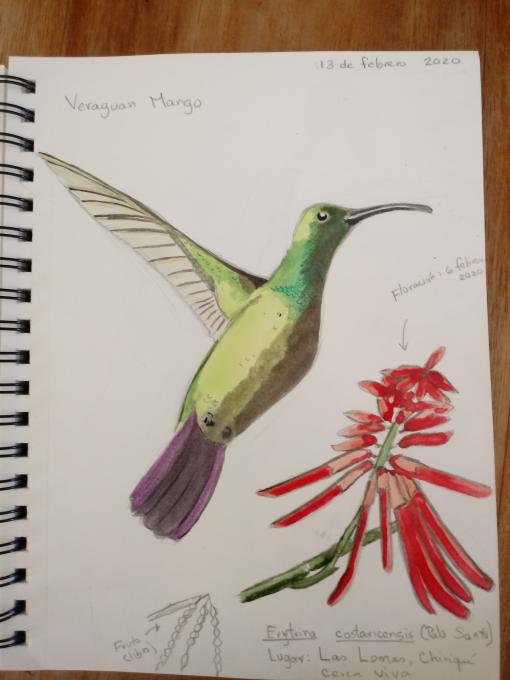
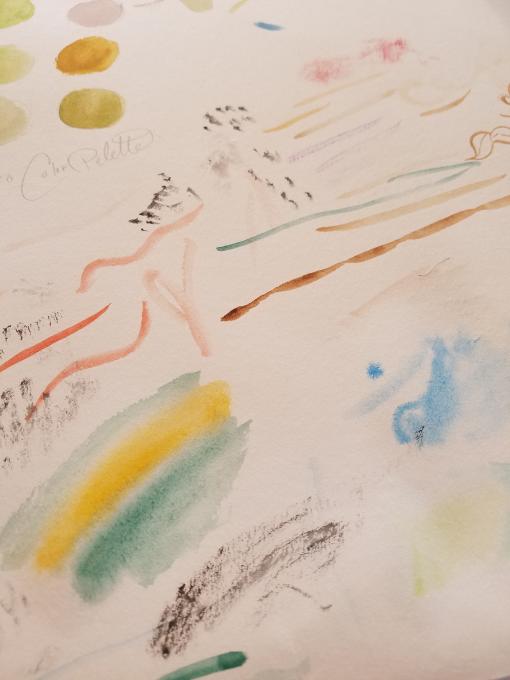


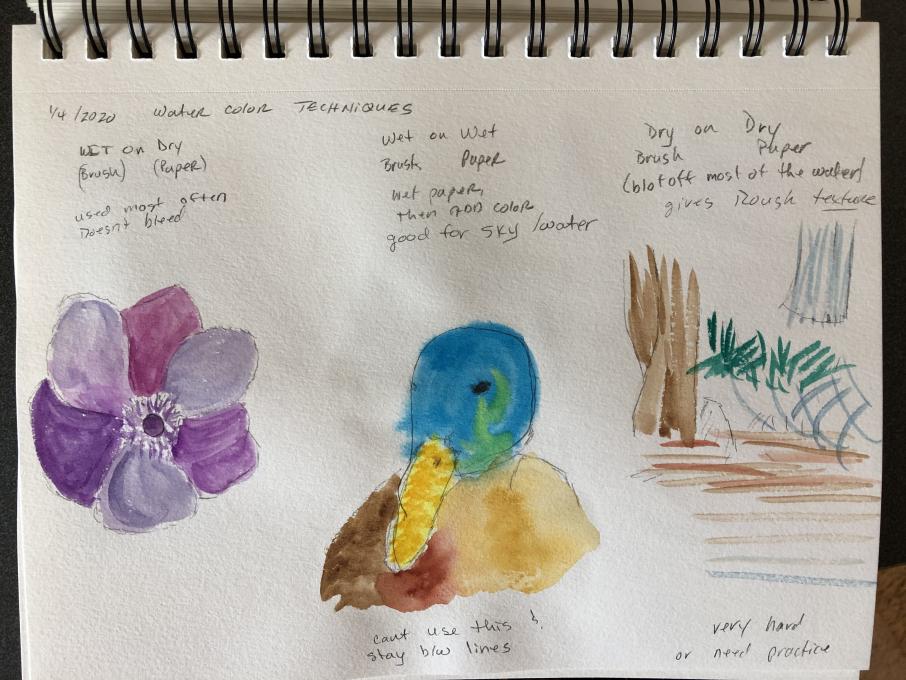
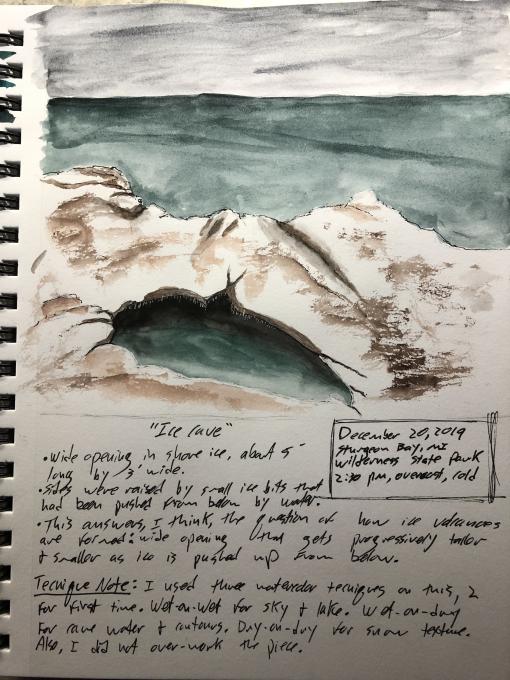

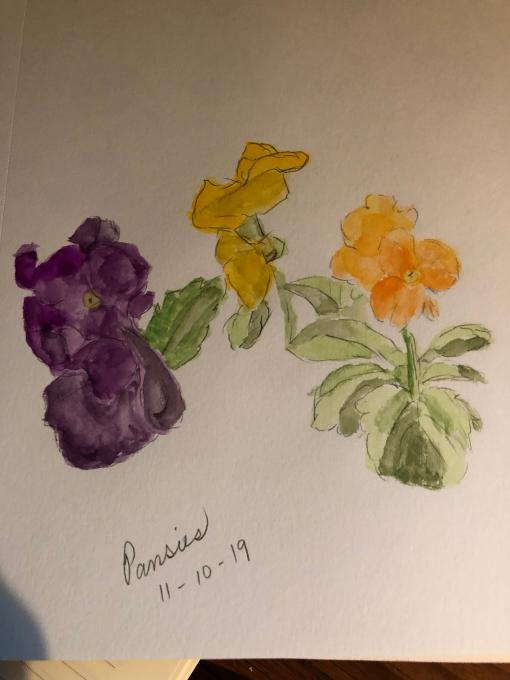
 practice!
practice!